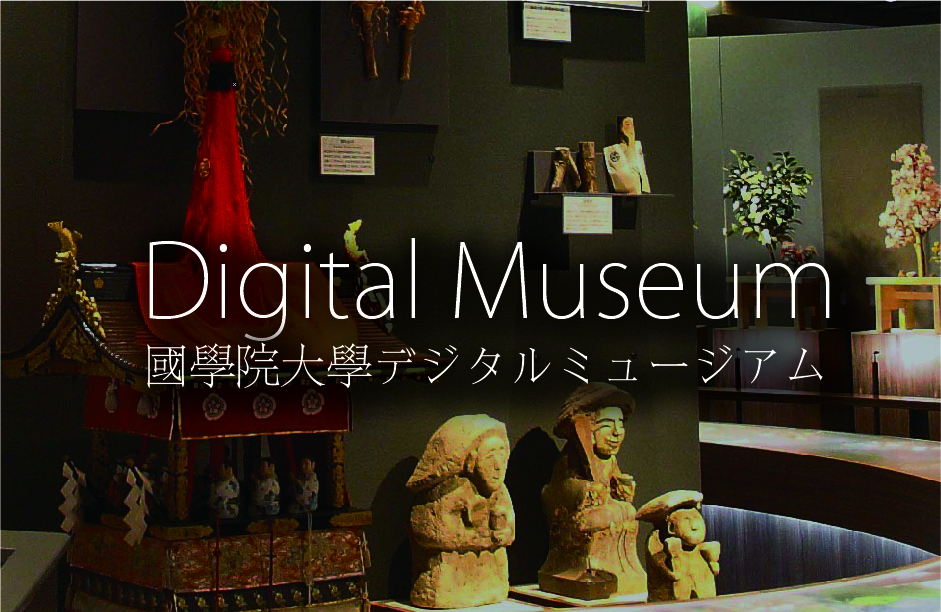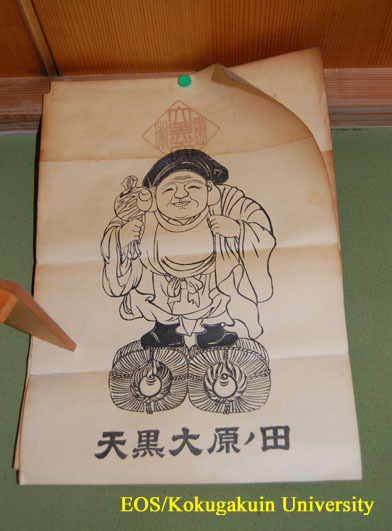- トップ
- Encyclopedia of Shinto
- Daikokuten
Encyclopedia of Shinto
| Main Menu: | |
| Links: |
詳細表示 (Complete Article)
| カテゴリー1: | 2. Kami (Deities) |
|---|---|
| カテゴリー2: | Kami in Folk Religion |
| Title | Daikokuten |
| Text | One of the "seven deities of good fortune" (shichifukujin), Daikokuten is most commonly seen carrying a "wealth-pounding" wooden mallet in his right hand, holding a treasure sack over his left shoulder, and standing upon rice bales. Daikokuten's identity is said to have originated in the Indian deity Mahākalā ("Great-Black"), variously described as an incarnation of Shiva known for destruction, or else as an incarnation of Daijizaiten (an alternate Japanese name for Shiva) who acts as a god of war. In these forms, Daikokuten was sometimes depicted as a figure with three scowling faces and six arms. On the other hand, according to the Nankai kikinaihōden (Ch. Nánhǎi jí-guī-nè-fǎ-chuán) compiled by the Tang-dynasty Yì-Jìng (Jp. Gijō, 635-713), Buddhist temples in India enshrined Daikokuten on kitchen pillars as a god of fortune, depicting him as a black-colored, two-armed figure holding a sack. It was this cult of Daikokuten which the Tendai-sect founder Saichō introduced to Japan, resulting in the practice of enshrining Daikokuten as a kitchen tutelary in Japanese Tendai temples, and also leading to the custom of calling priests' wives "Daikoku-san." As esoteric Buddhism was transmitted to China and Japan, Daikokuten came to be depicted with a pleasant facial expression in place of the fearsome scowl of earlier figures. Further, the development of concepts of shinbutsu shūgō (the amalgamation of kami with buddhist deities) from the medieval period on led to the association of Daikoku with the native kami Ōkuninushi, based on the homophonic resemblance of the Sino-Japanese characters used in their names (ōkuni can also be read as daikoku). In the late Muromachi period, Daikoku came to be counted with Ebisu among the seven deities of good fortune in the emerging cult of shichi fukujin. The common practice of enshrining Daikoku and Ebisu together was already observed from the that period; the practice originated in the fact that the main object of worship (saijin) at the Nishinomiya Shrine was Ebisu Saburō, a figure who, however, was simultaneously identified with Ōkuninushi no kami and Kotoshironushi no kami. Eventually, however, Ebisu came to be identified as Kotoshironushi no kami alone, thus leaving Daikoku (Ōkuninushi) to be seen as a separate figure. In homes, the two deities Ebisu and Daikoku came to be enshrined in the area of the kitchen or oven, while merchants worshiped the two as tutelaries of commercial success, and farmers worshiped them as tutelaries of the rice paddy (ta no kami). -Iwai Hiroshi |





